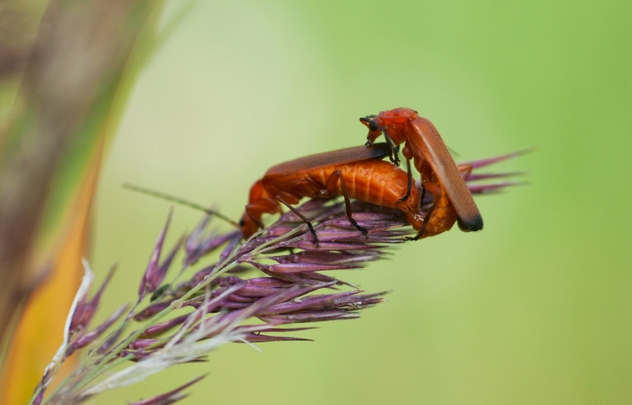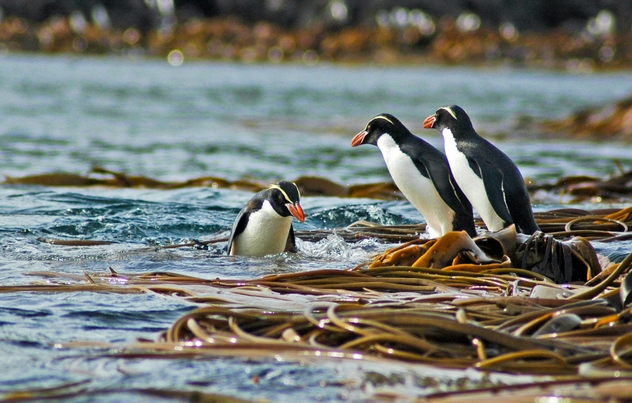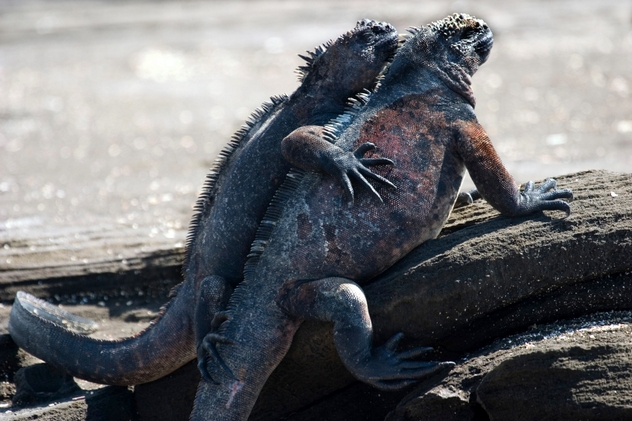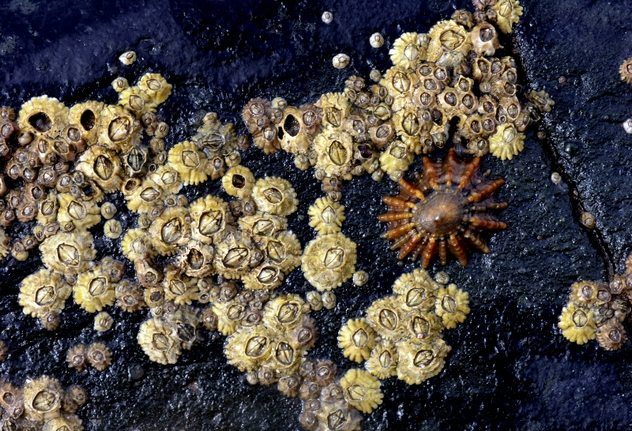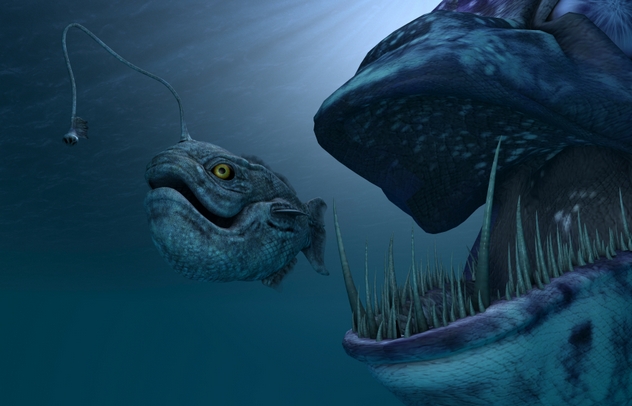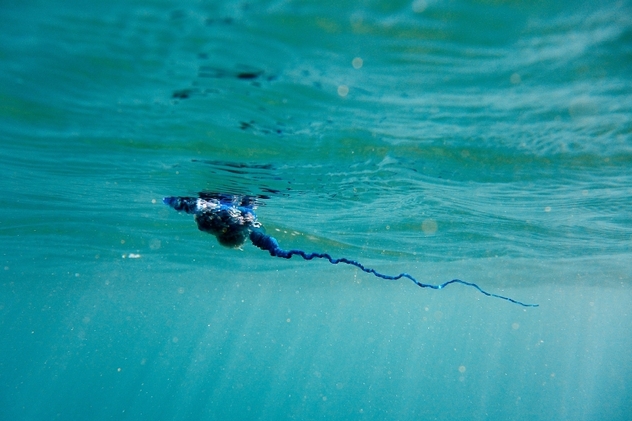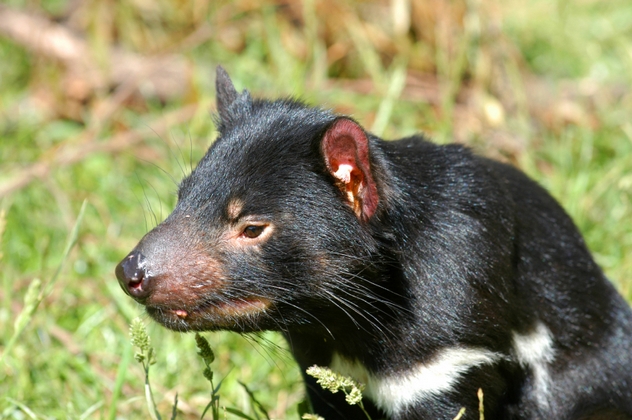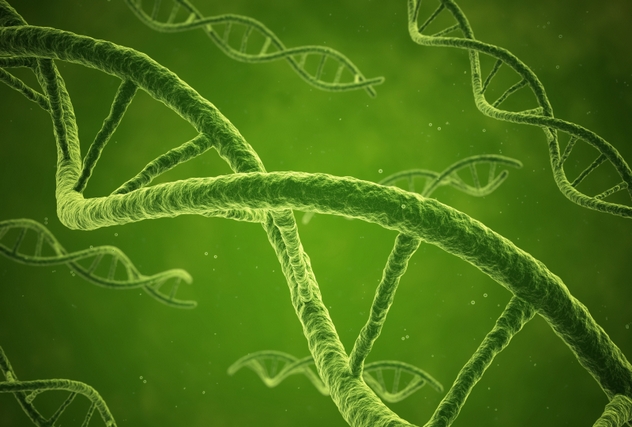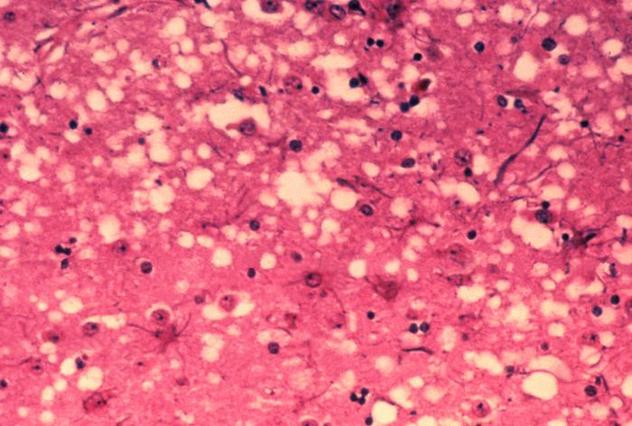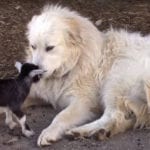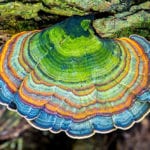10Traumatic Insemination
A particularly sadistic outcome of sexual selection is the intricate morphological battle waged between the sexes to produce genitalia that maximize their owner’s reproductive success during copulation. This process, in fact, is so common that penises are considered the fastest evolving bodily organs in species with internal fertilization and are common indicators of new speciation events. In males of some invertebrate species, this results in the evolution of diabolical penises bedecked with barbs and spines designed to injure the vagina in order to diminish the chances of the female mating with other partners. The process is exaggerated to ridiculously grotesque extremes in bedbugs (Cimex lectularius), in which the penis has evolved into a brutal spike that the male uses to impale the female in the lower abdomen, circumventing her reproductive tract entirely. The resulting sexual injuries are quite costly to the female, who suffers a shorter life expectancy due to the metabolic costs involved in healing and exposure to diseases.
9Insurance Offspring
Life in nature is harsh and brutal, and natural selection starts acting on an animal from its first second of life. In a horrific cost-benefit analysis, some species of large birds including some pelicans (Pelicanus sp.) and crested penguins (Eudyptes sp.), offset the extreme resource commitment needed for raising a healthy chick against the relative ease of laying a second small egg. This “B-chick” is invariably fated to die from the moment it hatches. Smaller and weaker than its older sibling, the B-chick presents a direct competition for the parents’ food and care. It can generally look forward only to a short, sad life of neglect and hunger, before being pecked to death or turfed out of the nest within its first week. The B-chick’s sole reason for being is as a backup, in the unlikely event that the favorite eldest child dies. It’s no more than a living, breathing insurance policy for the parents’ labor-intensive commitment to having a child. For many animals with large broods of young produced within contained spaces, like frogs and spiders, sibling cannibalism is an ever-present danger, too. Statistically, hungry young animals prefer not to feast on the flesh of their brothers and sisters if given the choice to devour some unrelated innocent instead, but many will still readily do so.
8Paedomorphosis
One shortcut to rapid morphological change in a species is to flick back the genetic clock and alter the speed at which traits develop during an organism’s early developmental stage. Think of it as evolutionary change by blurring the boundaries between adults and fetuses, turning babies into stealth ninjas and adults into squishy, dependent blobs. Male marine iguanas (Amblyrhynchus cristatus) utilize an associated process as an alternative mating strategy. In an attempt to maximize reproductive success, while at the same time bypassing the labor-intensive efforts needed to acquire and defend a large territory and harem of one’s own females, some males simply don’t bother growing up. These “sneaker” males don’t develop overt secondary sexual characteristics, instead remaining in a juvenile form indistinguishable from a female. Sneaker males are secretly sexually active, though. Current research suggests that they begin discretely masturbating in a harem, before rapidly pouncing on an unsuspecting female and immediately ejaculating inside her, carrying out a stealth copulation right beneath the territorial male’s unsuspecting nose. More grotesque still is the reproductive development of a handful of insects, including certain bagworm moths (Psychidae). The males of these species are pretty standard, but the female caterpillar never emerges from her pupa, remaining as a fetal, wormlike creature in a bag, albeit one with fully developed adult genitalia. The unperturbed male mates with her by penetrating her casing with his prehensile, elongated abdomen, often dying in the process by becoming trapped. A final, delightful thought on this topic is that our species is also paedomorphic. Throughout our mammalian evolution, our faces have regressed and flattened to become more childlike, a trait exacerbated through the slight morphological differences between adult human males and females.
7Animal Sessility
A prevalent form of zoological degeneration is sessility. Sessile animals abandon free-moving life for a vegetative existence, permanently attached to a surface. Barnacles (Cirripedia) are actually crustaceans related to shrimps and crabs, and they begin their lives as similar-looking, free-swimming creatures called cyprids. Upon finding a suitable spot, a cyprid cements itself upside down with secretions exuded from its antennae and proceeds to degenerate into an immobile, filter-feeding cone, losing its eyes, antennae, and structural integrity to become a flexible bag which then grows a calcareous shell. A similar process occurs on land in the sooty beech scale insect (Ultracoelostoma assimile) of New Zealand’s South Island, in which the crawling female larva ensconces herself in tree bark. Her legs and antennae atrophy, while her body degenerates into a bloated spherical blob. Sessility may seem like a step backward, but what it really confers is safety. The evolution of sessility allowed Precambrian animals to fix and control the uneven and unstable substrates of the ocean floor to form closely bonded, mutually beneficial communities. Think of sessility as that eureka moment when a morbidly obese man decides that it’s easier to stop getting up from his armchair rather than struggling all the way to the bathroom. Disturbingly, it’s a strategy that has repeatedly paid off in nature.
6Sexual Parasitism
How stable is the balance between our two sexes? Exceptions abound in nature, and some of them are rather unsavory. In a world rife with infidelity and promiscuity that demands reproductive success, some species have evolved males prepared to go that extra, extra mile to successfully father young. Tiny male deep sea anglerfish, in 23 species among the known 160, have a single function in life: to find one of the gigantic, bloated abominations that are the females of their species and attach themselves to the female’s body with their jaws. These males lack proper mouths and digestive tracts, so they will starve and die in a few months if they fail to mate. After attachment, the male’s body begins to degenerate and simplify, progressively losing all distinction and form until he is just a tumor-like blob containing a rapidly beating pair of testicles, sharing the female’s circulatory system and nutrition. The massive female similarly lacks secondary sexual characteristics before she fuses with a male, which triggers her to begin producing eggs. The truly depressing part, though, is that even this doesn’t necessarily secure the male a life of faithful matrimony, as in some species he might be joined by as many as seven other lifelong parasitic suitors, melted alongside him into the flesh of his mate.
5Parasitic Degeneration
Two things nature loves are efficiency and specialization. A common misconception about natural selection is that evolution is a progressive force leading to an increase in complexity over time. Parasites are a great refutation of this generalization. They are beings that have pared their bodies down to a bare minimum of simplicity in order to be as inconspicuous as they can while feasting on the life fluids and tissues of bigger organisms. Horrifically, parasitic species comprise at least 40 percent of all life on Earth. A recent discovery reappraised the obscure, parasitic Myxozoan group as being a bizarre kind of degenerate jellyfish, reduced down to only a few cells with no delineated digestive anatomy and a freakishly short genome, 20–40 times smaller than usual. Myxozoa have abandoned some of the key traits otherwise universal to animals, like Hox genes, which regulate basic multicellular function, unpleasantly blurring the boundary of what should be included in the animal kingdom and why. A particularly impressive example of parasitic degeneracy occurs in the female barnacle Rhizocephala, which, as a larva, fixes herself onto a crab’s body and then gets to work. As she matures, she degenerates from a cyprid into a fungus-like mass of hyphae, devoid of any hint of bodily segmentation or distinct organs, which worms its way through the host’s sinuses, right through its body, leaching and draining its nutrients and regulating its behavior in order to maximize her success at producing eggs. Adult Rhizocephala have no brains and only the most vestigial nervous systems, making H.R. Giger’s most blasphemous creations look like Bambi by comparison.
4Colonial Development
Having gleefully explored how simplified animals can become, let’s look at the stomach-churning ways that natural selection has found to reassemble these pieces. Imagine that your body wasn’t composed of cells but of thousands of tiny, genetically identical replicas of yourself, each one fused to the next with its own skin . . . and all moving sinuously together in concert to allow you to perform basic bodily functions. Your harder parts would most likely be the compressed, calcified corpses of hundreds of sacrificial mini-you’s. Yum. Though poorly studied, bonded superorganisms like this are not unusual in the animal kingdom, occurring most impressively in the Cnidarians (jellyfish, corals, and anemones). One of the best-known and most complex is the Portuguese man-of-war (Physalia physalis), which, though resembling a jellyfish, is in fact a bonded colony of multiple clonal, jellyfish-like animals called zooids, all linked together into a single, giant jellyfish superorganism. Other related siphonophores form actively swimming gelatinous ropes, each longer than a blue whale, which have barely been studied by science due to their extremely fragile bodies, marine environment, and solitary natures. Siphonophore expert Casey Dunn likens these beings to gigantic masses of Siamese twins in various states of degeneration, many composed only of legs, mouths, or genitals. Think of them as nature’s answer to The Human Centipede. Dunn considers the siphonophore to have important implications for the concept of individuality in nature, and he is particularly interested in the prospect of siphonophore “cancer,” which would entail the spread of degenerately “normal” animals through such a fused colony, possessing selfish levels of independence at the expense of the rest of the community. As it turns out, though, this is just the tip of the iceberg . . .
3Parasitic Cancers
The Tasmanian devil (Sarcophilus harrisii) has suffered an 80-percent population decline since 1996 due to infectious facial tumors. Devil facial tumor disease (DFTD) originated from a single devil and spread rapidly through the population as the animals fought and bit one another during their characteristically aggressive scuffles. Devil facial tumors grow to large sizes in just six months, killing the host by impeding its feeding, infecting other body organs, or causing blindness. A similar sexually transmissible cancer discovered in dogs, called canine transmissible venereal tumor (CTVT), fuels itself through stealing mitochondria from each new host’s cells in order to power its growth, which it has been doing for thousands of years. Parasitic cancers raise deeply unsettling questions about what it means to be a living organism. Since they have undergone genetic changes, are self-replicating, and behave in a manner highly aberrant from the host species’ cells, they can be better thought of as—wait for it—highly degenerate clonal parasitic mammals. Since we tend to think of viruses as just on the borderline of what it means to be alive, these cancers seem to have oozed their way into the life-form category, too. That’s right . . . cancer has become an actual animal in its own right.
2Jumping Genes
A helpful way to start really understanding natural selection is to broaden our conceptual horizons of what constitutes an ecosystem and its component units. An analogous process to the survival of the fittest that animals face in their environments also occurs right down past the cellular level. There is no more literal representation of Richard Dawkins’s The Selfish Gene than among the parasitic genetic sequences called transposons, which are believed to have originated from viral intrusions into the DNA of our own lizard-like ancestors. Transposons comprise an estimated one-half to two-thirds of the human genome, representing short, self-replicating, repeated patches of seemingly functionless genes. Only a tiny fraction of transposons seem to have been adapted back into the genome to serve any direct role in how our bodies operate, though the current understanding of their prevalence is that they create important raw noise and variation along the genome, providing the canvas for beneficial mutations and the raw material for evolution. According to the nearly neutral theory of molecular evolution, transposons thrive by remaining silent mutations with no direct impact on the organism’s body. If a transposon directly alters the function of genes around it, it runs the risk of diminishing the host’s fitness, potentially removing itself from the gene pool. This means that our idea of having stable, separate, and discrete bodily identities is another anthropocentric illusion. At all levels of selection, a war is being constantly waged, right down to our basic molecular structure. Not only are parasites abundant right through us on every level, but in a very real sense, we ourselves are no more than the iterative expressions of their actions.
1Infectious Prions
Even simpler than viruses, infectious prions are malformed, free-floating proteins that self-replicate by bending other proteins into the same shape they’re in, steadily accumulating in the host’s brain. Their sheer simplicity makes them the perfect parasite, able to spread between species with ease, and their infections are incurable using current technology. While proteins are the organic building blocks of all known biological life, they’re not technically alive in their own right, but these errant ones are nevertheless evolving. A study undertaken by the Scripps Research Institute revealed that infectious prion cultures exposed to inhibiting chemicals adapted to produce resistant strains much like a bacteria or virus would. Despite lacking any hereditary genetic material, in this instance, natural selection is acting at the next level down from genes and chromosomes, in the realm of complex organic molecules. Infectious prions are not living organisms in even the loosest sense, but they are still adaptive products of natural selection, capable of horrendous impact upon their animal hosts, like mad cow disease and kuru disease. Recent research even implicates them as the cause of Alzheimer’s and Parkinson’s, going so far as to suggest that their associated prions may potentially be infectious in extremely specific circumstances. It’s not so much that our component molecular chemistry or even nature itself hates us. It’s more that it doesn’t care about us whatsoever. Graham is a well-meaning, man-shaped aggregate of microbial life hidden in a three-piece suit. Email them at [email protected].
